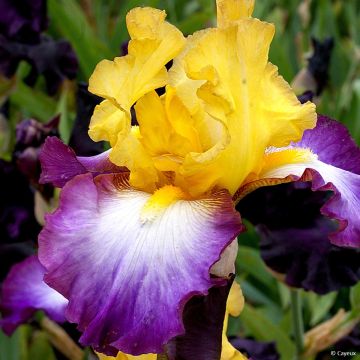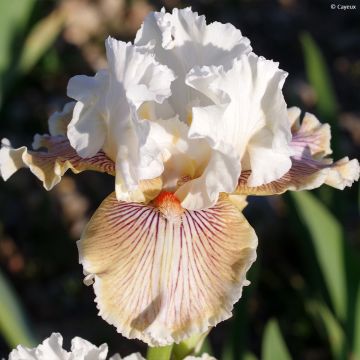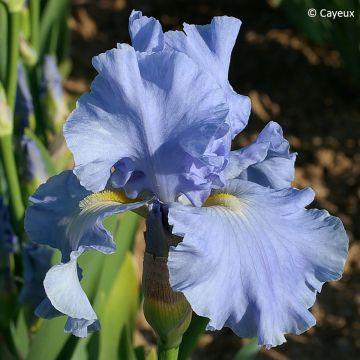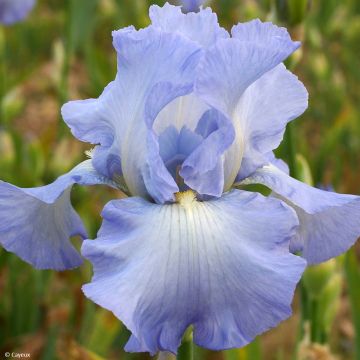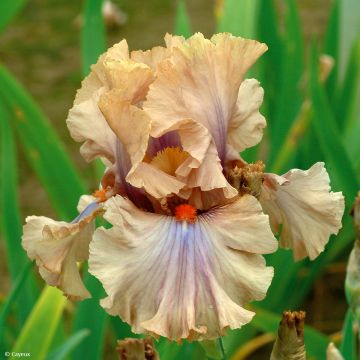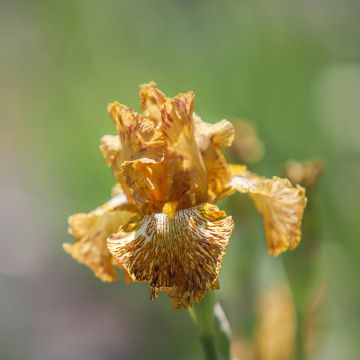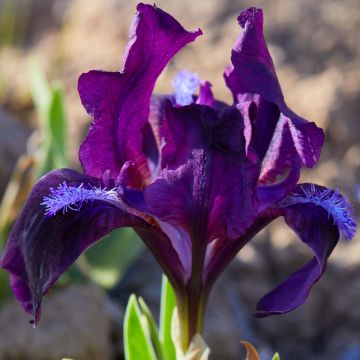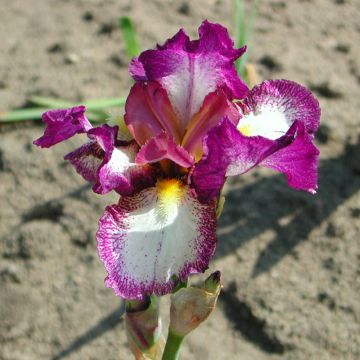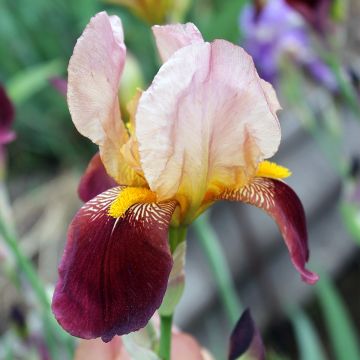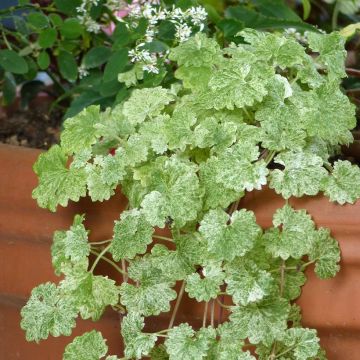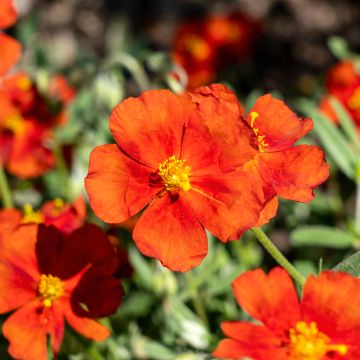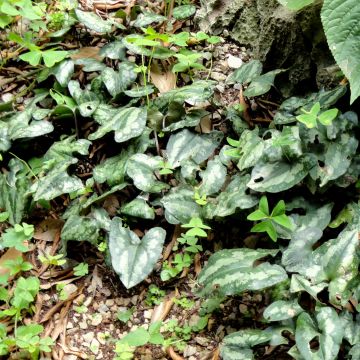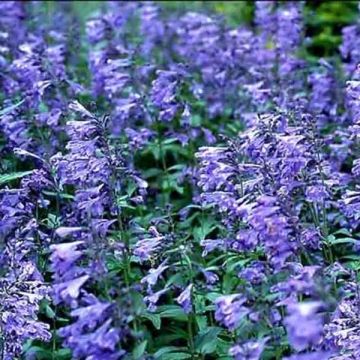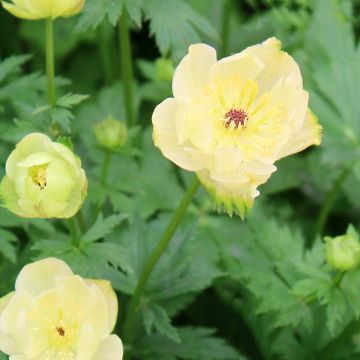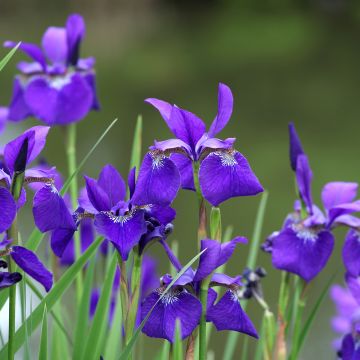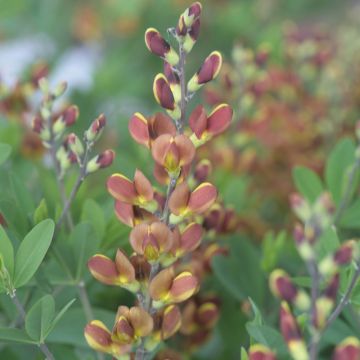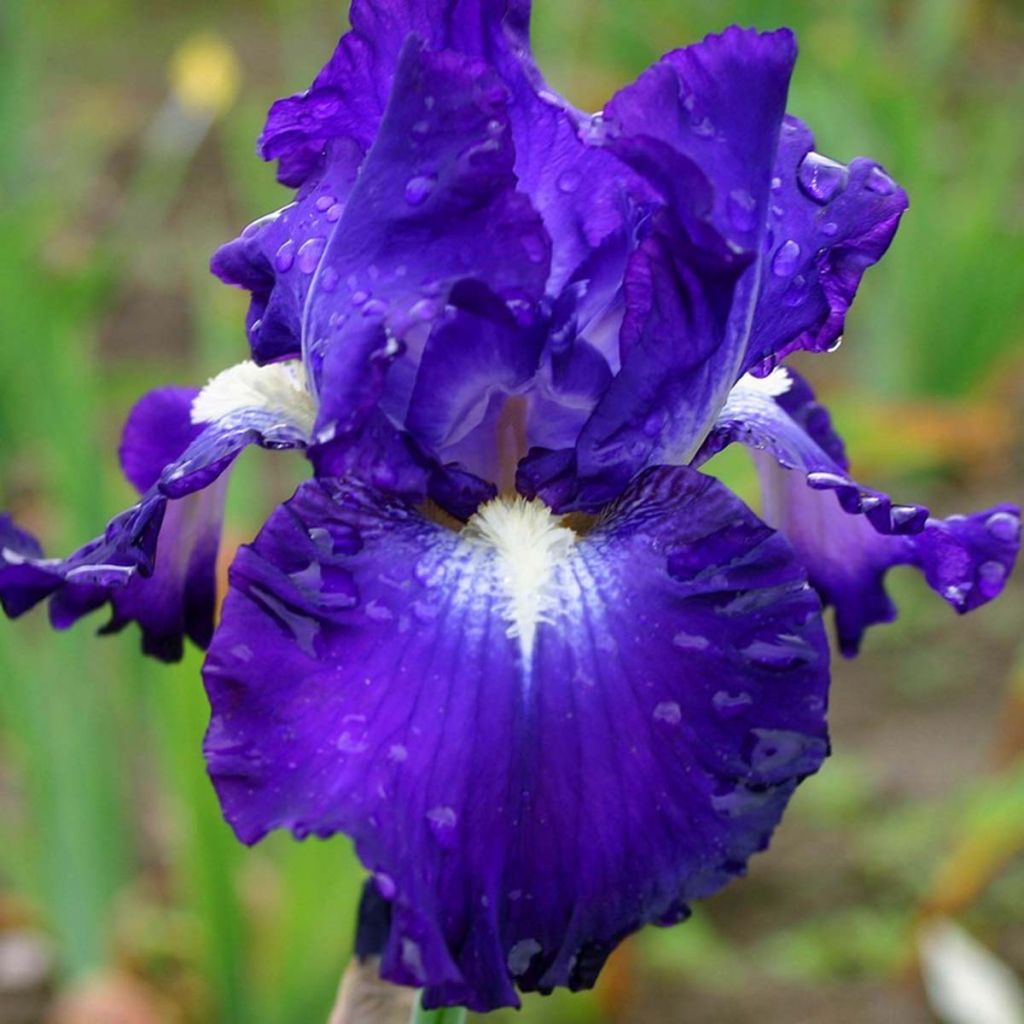

Iris Spot - Bearded Iris
Iris Spot - Bearded Iris
Iris germanica Spot
German Iris, Bearded Iris
Small young plant upon arrival. Strong growth after planting and beautiful flower in accordance with the image.
Thibault, 19/02/2022
Special offer!
Receive a €20 voucher for any order over €90 (excluding delivery costs, credit notes, and plastic-free options)!
1- Add your favorite plants to your cart.
2- Once you have reached €90, confirm your order (you can even choose the delivery date!).
3- As soon as your order is shipped, you will receive an email containing your voucher code, valid for 3 months (90 days).
Your voucher is unique and can only be used once, for any order with a minimum value of €20, excluding delivery costs.
Can be combined with other current offers, non-divisible and non-refundable.
Why not try an alternative variety in stock?
View all →This plant carries a 12 months recovery warranty
More information
We guarantee the quality of our plants for a full growing cycle, and will replace at our expense any plant that fails to recover under normal climatic and planting conditions.
Would this plant suit my garden?
Set up your Plantfit profile →
Description
Iris 'Spot' has the ability to produce two flowerings in a year: the first in late spring, and the second in October, if the plant has rich soil and does not lack water at the end of summer. It gets its name 'Spot' from the small area of sparkling white that extends from its immaculate beard. This touch of light gives this bright blue-violet flower personality and style. Shelter it from the wind, for example against a wall, so that its long flower stalks do not bend.
Iris 'Spot' is a rhizomatous, deciduous perennial plant that develops elegantly upright clumps in spring. It belongs to the family of Iridaceae. It is one of the many cultivars obtained over centuries, whose controversial origin is debated around the number of chromosomes of potential ancestors. It is worth noting that Garden Iris has European origins. They thrive in limestone soils and require at least half a day of full sun to flower well.
'Spot' reaches 1.10m (4ft) in height when flowering, it is a tall variety that may require staking. The clump will spread indefinitely over time, with the central rhizomes becoming bare in favour of the outer rhizomes. The foliage consists of long and wide sword-shaped, glaucous green leaves, with parallel veins running through them. This variety flowers for the first time in June, at the end of the Grand Iris season. Floral stems appear in May which bloom from the top towards the lower branches. If it does not lack water or nutrients, it will produce more flowers in early autumn. The colour is enhanced by the texture of the petals and sepals.
Bourdillon, 2004.
To accompany irises, choose plants based on their needs (exposure, soil...), growth (low plants or light foliage), decorative appearance and flowering period. For example, Gaura will cast little shade on the irises and will keep the faded iris bed attractive throughout the summer. Eschscholzia will be satisfied with dry soil in summer, just like the iris. Geraniums, salvias, and Libertia also complement irises very well. Slopes and terraced edges can be stabilised by dense plantings of old diploid varieties that require little care. If the goal is more decorative and access for care is possible, modern varieties can be chosen, for example intermediates that are less likely to be flattened by wind and rain.
Against a wall, the relative shelter from the wind allows the use of tall irises. Of course, shorter and earlier varieties can be planted in the foreground.
Path border: the realm of dwarf irises less than 40 cm (16in) tall, up to intermediates (in size and earliness) and border irises, medium-sized but flowering with the tall ones.
Mass planting border: the domain of border irises, but also dwarfs, depending on the circumstances.
Mixed border: the entire range of sizes can be used, to be chosen according to the position (foreground, background) and the size of the surrounding plants.
Iris bed, iris garden: the paradise of the iris lover where the choice of varieties reflects taste. The use of the full range of bearded irises allows for two and a half months of flowers in spring. The choice of perpetual irises offers some additional flowers in late summer or autumn, depending on the climate.
The vegetable garden can be embellished with a few clumps or borders of irises for cut flowers.
Iris Spot - Bearded Iris in pictures
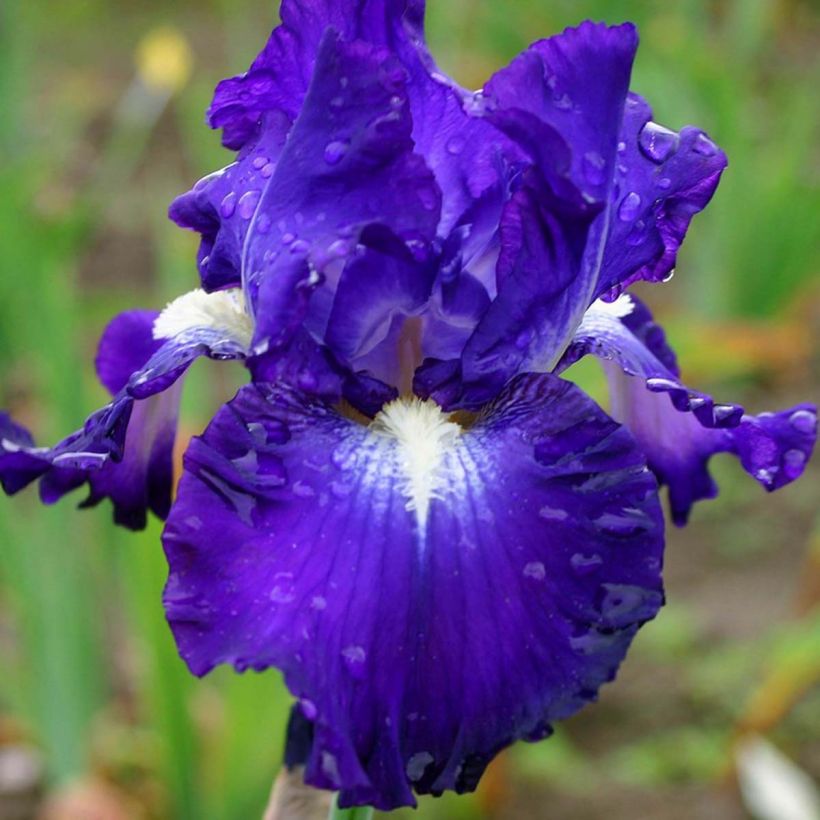

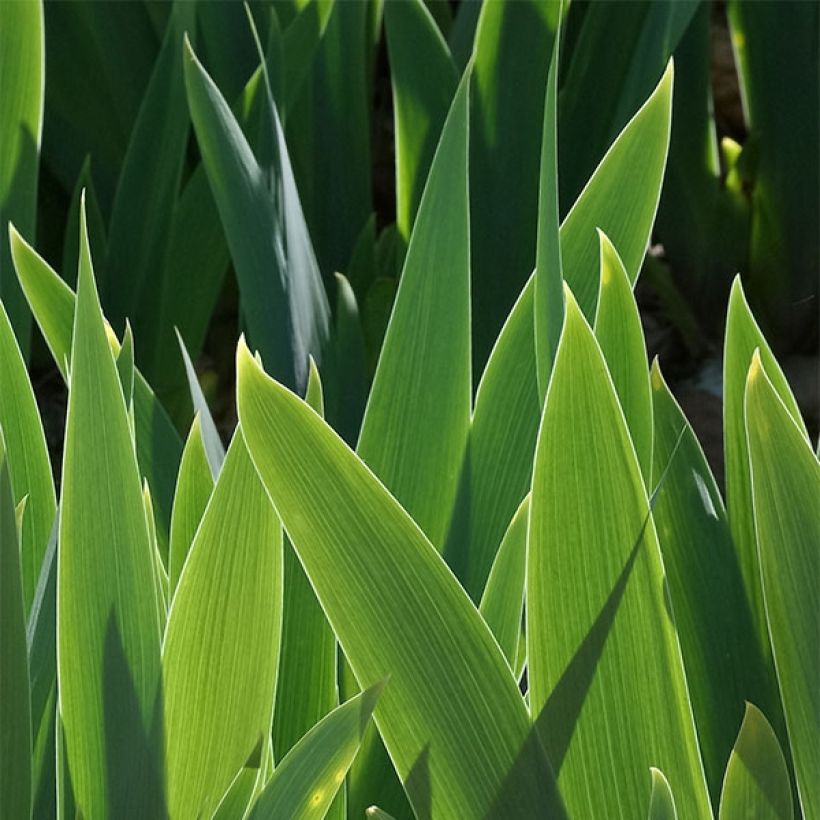

Flowering
Foliage
Plant habit
Botanical data
Iris
germanica
Spot
Iridaceae
German Iris, Bearded Iris
Cultivar or hybrid
Other German Iris - Bearded Iris
View all →Planting and care
Do you have a sunny location, sheltered from the wind, warm and rather dry in summer?
This is the ideal location for tall irises! In the shade, they grow but do not flower. They are hardy and they do not need winter protection. Well-drained soil is perfect, even dry. German iris requires limestone soil: add lime if it tends to be acidic. Excessively wet soil promotes rhizome rot. Plant from July to September to allow the rhizomes to grow and develop new roots before winter. They should be planted as soon as they are purchased for the best results. Plan to divide irises every 4 years or so to give them fresh soil. They have vigorous growth and require space to develop and flower well. Plant with spacing appropriate to the size and vigour of the variety: about 34-50 cm (13-20in) for tall ones. In a monochrome planting, the rhizomes are planted in a staggered pattern. To create a mix of colours, plant them in groups of several plants of the same variety. Always consider the direction of rhizome growth by arranging them in a star shape, with buds and leaves facing outward, and spacing them well away from other varieties to allow them room to grow.
Reblooming irises are prolific and demanding: they require more space and fertile soil, and should not lack water at the end of summer in order to bloom again.
Planting
Dig a hole that is wide and deep enough. Create a wide conical mound of soil in the hole to place the rhizome and spread-out roots on. Cover the roots. It is important for the rhizome to be left just above the surface of the soil. It should not be planted in a dip (risk of rot), so anticipate that the soil will settle and the iris will sink. In clay or wet soil, the rhizome may even be raised on a slight mound. To make the soil cling to the roots, lightly firm and water thoroughly after planting. Water if necessary 2-3 times until the plant is established.
Maintenance:
Keep the soil weed-free by shallow hoeing, without damaging the rhizomes or roots. Weeds shade the irises, retain moisture (leading to rot), and attract slugs. Likewise, remove dry leaves. If they are diseased (reddish-brown bordered spots of heterosporiosis), burn them. Remove faded flowers.
Planting period
Intended location
Care
Planting & care advice
-
, onOrder confirmed
Reply from on Promesse de fleurs
Similar products
Haven't found what you were looking for?
Hardiness is the lowest winter temperature a plant can endure without suffering serious damage or even dying. However, hardiness is affected by location (a sheltered area, such as a patio), protection (winter cover) and soil type (hardiness is improved by well-drained soil).

Photo Sharing Terms & Conditions
In order to encourage gardeners to interact and share their experiences, Promesse de fleurs offers various media enabling content to be uploaded onto its Site - in particular via the ‘Photo sharing’ module.
The User agrees to refrain from:
- Posting any content that is illegal, prejudicial, insulting, racist, inciteful to hatred, revisionist, contrary to public decency, that infringes on privacy or on the privacy rights of third parties, in particular the publicity rights of persons and goods, intellectual property rights, or the right to privacy.
- Submitting content on behalf of a third party;
- Impersonate the identity of a third party and/or publish any personal information about a third party;
In general, the User undertakes to refrain from any unethical behaviour.
All Content (in particular text, comments, files, images, photos, videos, creative works, etc.), which may be subject to property or intellectual property rights, image or other private rights, shall remain the property of the User, subject to the limited rights granted by the terms of the licence granted by Promesse de fleurs as stated below. Users are at liberty to publish or not to publish such Content on the Site, notably via the ‘Photo Sharing’ facility, and accept that this Content shall be made public and freely accessible, notably on the Internet.
Users further acknowledge, undertake to have ,and guarantee that they hold all necessary rights and permissions to publish such material on the Site, in particular with regard to the legislation in force pertaining to any privacy, property, intellectual property, image, or contractual rights, or rights of any other nature. By publishing such Content on the Site, Users acknowledge accepting full liability as publishers of the Content within the meaning of the law, and grant Promesse de fleurs, free of charge, an inclusive, worldwide licence for the said Content for the entire duration of its publication, including all reproduction, representation, up/downloading, displaying, performing, transmission, and storage rights.
Users also grant permission for their name to be linked to the Content and accept that this link may not always be made available.
By engaging in posting material, Users consent to their Content becoming automatically accessible on the Internet, in particular on other sites and/or blogs and/or web pages of the Promesse de fleurs site, including in particular social pages and the Promesse de fleurs catalogue.
Users may secure the removal of entrusted content free of charge by issuing a simple request via our contact form.
The flowering period indicated on our website applies to countries and regions located in USDA zone 8 (France, the United Kingdom, Ireland, the Netherlands, etc.)
It will vary according to where you live:
- In zones 9 to 10 (Italy, Spain, Greece, etc.), flowering will occur about 2 to 4 weeks earlier.
- In zones 6 to 7 (Germany, Poland, Slovenia, and lower mountainous regions), flowering will be delayed by 2 to 3 weeks.
- In zone 5 (Central Europe, Scandinavia), blooming will be delayed by 3 to 5 weeks.
In temperate climates, pruning of spring-flowering shrubs (forsythia, spireas, etc.) should be done just after flowering.
Pruning of summer-flowering shrubs (Indian Lilac, Perovskia, etc.) can be done in winter or spring.
In cold regions as well as with frost-sensitive plants, avoid pruning too early when severe frosts may still occur.
The planting period indicated on our website applies to countries and regions located in USDA zone 8 (France, United Kingdom, Ireland, Netherlands).
It will vary according to where you live:
- In Mediterranean zones (Marseille, Madrid, Milan, etc.), autumn and winter are the best planting periods.
- In continental zones (Strasbourg, Munich, Vienna, etc.), delay planting by 2 to 3 weeks in spring and bring it forward by 2 to 4 weeks in autumn.
- In mountainous regions (the Alps, Pyrenees, Carpathians, etc.), it is best to plant in late spring (May-June) or late summer (August-September).
The harvesting period indicated on our website applies to countries and regions in USDA zone 8 (France, England, Ireland, the Netherlands).
In colder areas (Scandinavia, Poland, Austria...) fruit and vegetable harvests are likely to be delayed by 3-4 weeks.
In warmer areas (Italy, Spain, Greece, etc.), harvesting will probably take place earlier, depending on weather conditions.
The sowing periods indicated on our website apply to countries and regions within USDA Zone 8 (France, UK, Ireland, Netherlands).
In colder areas (Scandinavia, Poland, Austria...), delay any outdoor sowing by 3-4 weeks, or sow under glass.
In warmer climes (Italy, Spain, Greece, etc.), bring outdoor sowing forward by a few weeks.






























